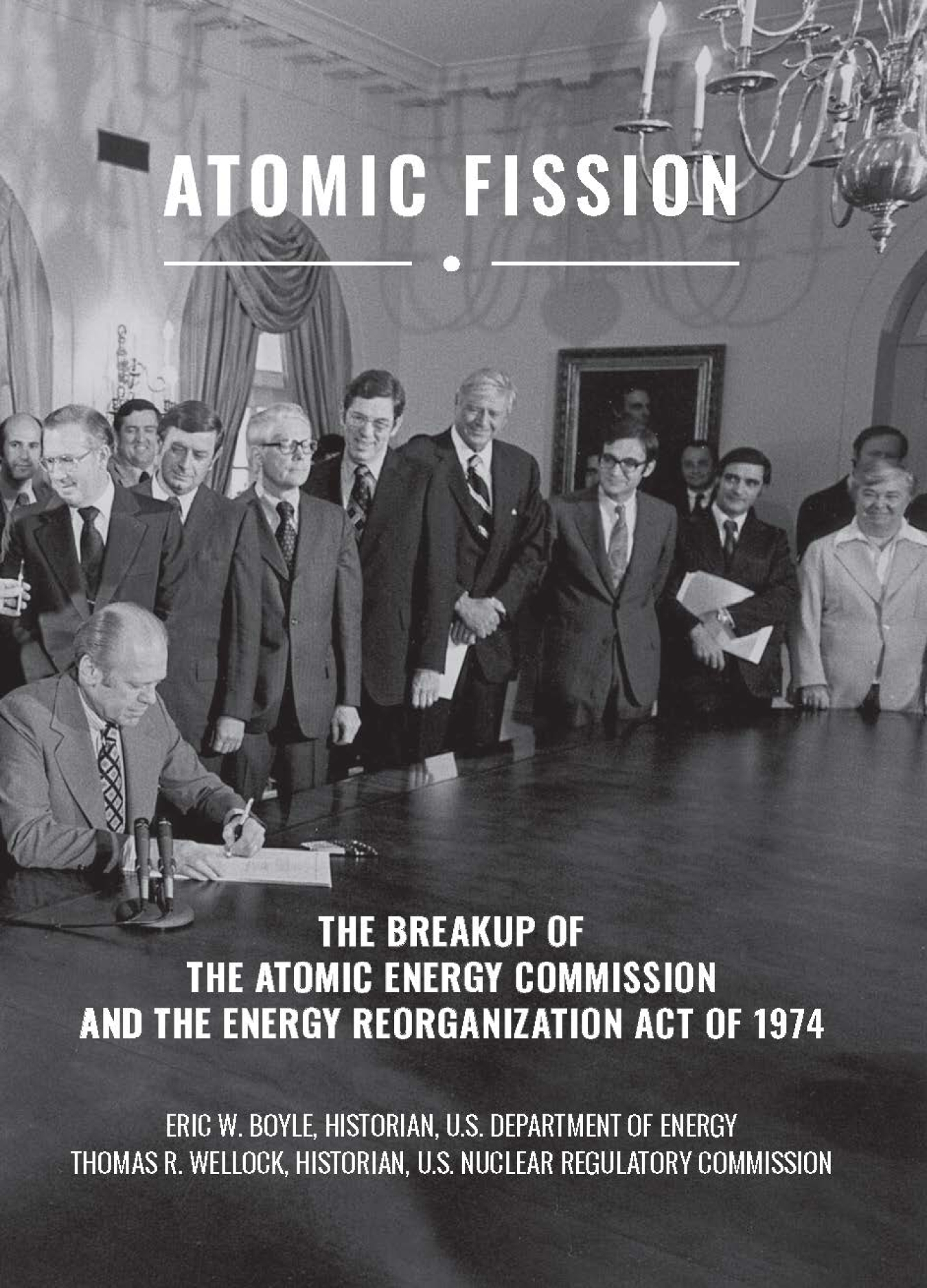DOE historian and Nuclear Regulatory Commission historian have published a book on the history of the U.S. Atomic Energy Commission and its impacts on DOE’s current mission.
April 24, 2025U.S. Department of Energy (DOE) Chief Historian Eric Boyle and U.S. Nuclear Regulatory Commission (NRC) Historian Thomas R. Wellock have recently published a book titled Atomic Fission: The Breakup of the Atomic Energy Commission and the Energy Reorganization Act of 1974.
The book provides the first detailed account of the passing of the Energy Reorganization Act (ERA), signed by President Gerald Ford in 1974, which abolished the U.S. Atomic Energy Commission (AEC) and separated it into two new agencies: the NRC and the Energy Research and Development Administration (ERDA).
“ERDA was eventually one of three agencies that became part of DOE in 1977. The book explains that transition, and also highlights the various factors involved with the earlier abolition of the AEC in 1974. ERDA, NRC, and DOE all faced unique challenges, especially in their early years, so one of the primary goals of Atomic Fission is to explain how the agencies navigated a series of related crises,” Boyle said.
Atomic Fission is the first major history publication by a DOE historian in nearly 20 years.
“Fifty years after the abolition of the AEC, the NRC and the DOE continue to be shaped by their shared history,” Boyle added.
The book explains how and why DOE currently leads the federal research effort to develop diverse energy technologies while ensuring that nuclear energy continues to remain an option for the U.S. DOE plays a major role in research and development and the NRC’s independent decisions on safety are key to winning regulatory approval.
“The DOE has also become a pivotal international partner in supporting the safe, secure, and peaceful use of nuclear energy across the globe,” Boyle added. “In recent years, over two-thirds of the DOE budget has been devoted to the legacy of nuclear weapons development, from managing the stockpile to research and environmental cleanup.”
DOE’s environmental cleanup and commitment to ensuring people’s safety is not only rooted in history, it also translates into the mission of the Office of Legacy Management (LM), which manages long-term site stewardship after cleanup and ensures the continued protection of human health and the environment.
LM has also partnered with other offices within DOE, such as the Office of Environmental Management, to expand the role that the national laboratories play in executing legacy nuclear waste cleanup and long-term stewardship of closure sites.
“The work done by the national laboratories proved to be a central part of the transition from AEC to ERDA, and those labs continue to serve as leading institutions for scientific innovation in the United States. They tackle the critical scientific challenges of modern times and address large-scale, complex R&D [research and development] challenges with a multidisciplinary approach that places an emphasis on translating basic science to innovation,” Boyle said.
Overall, Atomic Fission demonstrates how research and development in the energy field has been a constant mission for DOE and its predecessor agencies for the past eight decades. The book also provides a case study for navigating and surviving institutional changes over time.
“Whatever the future may hold, today’s search for a safe and secure energy future has been fundamentally shaped by the debates that led to the ERA in 1974,” Boyle added.
The book is currently available online and hard copies are available at the NRC.


